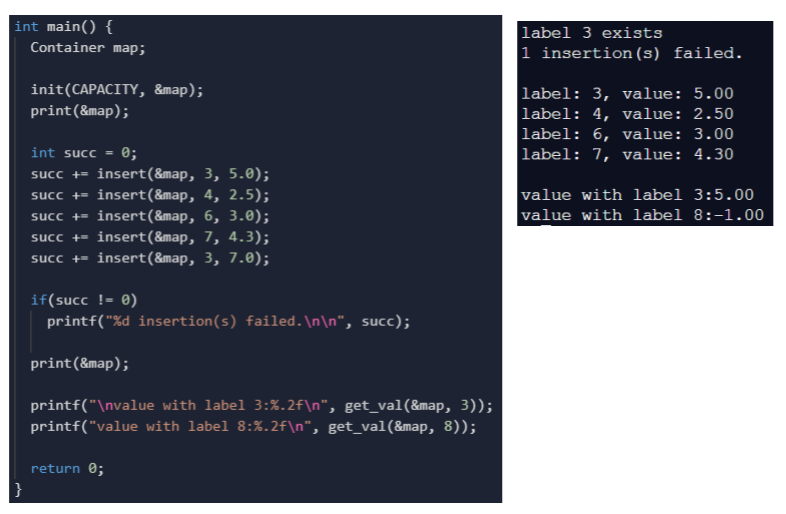Question
Write a C code that creates a data structure that holds floating-point values indicated by labels (integer type). The data structure has a maximum capacity
Write a C code that creates a data structure that holds floating-point values indicated by labels (integer type). The data structure has a maximum capacity of. It cannot hold a number of values that exceed this capacity. The capacity is determined by a symbolic constant defined in the code. The working principle of this data structure should be as follows:
labels: 3 | 4 | 6 | 7
values: 5.00 | 2.50 | 3.00 | 4.30
When the data structure is queried with a label, the corresponding value is returned. Only one from the same label can be found in the data structure. In the example, label 3 corresponds to a value of 5.00, label 5 does not exist in the data structure, so no value is returned. Labels and values must be dynamically generated integer and floating-point arrays. It keeps the current number of values in the values array (thus, it also shows the number of labels in the labels array)
Code to write: * A struct that will hold the data structure * init(), insert(), label_exists (), get_val () functions

Tip : In the code given to you to understand the prototypes of functions that need to be written use function calls and descriptions. The Main() function is written in the code given to you. If a function returns a value, it will return a value when called in the main function (you can tell from here whether the prototype has a return value). Since this data structure does not support a capacity increase, no such code will be written. Insert () returns 0 for success and 1 for fail. The conditions for failure are as follows: 1) capacity has been reached, 2) label already exists in the data structure. Where the last insert (insert (&map, 3, 7.0)) failed because an insert (&map, 3, 5.0) value with the same label (3) was already made.
Use the source code-named 'container. c'.add C to zip, which you will install in alms.
Please write in C
int main() { Container map; label 3 exists 1 insertion(s) failed. init(CAPACITY, &map); print(&map); label: 3, value: 5.00 label: 4, value: 2.50 label: 6, value: 3.00 label: 7, value: 4.30 int succ = @; Succ += insert(&map, 3, 5.0); Succ +- insert(&map, 4, 2.5); succ += insert(&map, 6, 3.0); succ += insert(&map, 7, 4.3); succ += insert(&map, 3, 7.0); value with label 3:5.00 value with label 8:-1.00 if(succ != 0) printf("%d insertion(s) failed. ", succ); print(&map); printf(" value with label 3:%.2f ", get_val(&map, 3)); printf("value with label 8:%.2f ", get_val(&map, 8)); return 0; }Step by Step Solution
There are 3 Steps involved in it
Step: 1

Get Instant Access to Expert-Tailored Solutions
See step-by-step solutions with expert insights and AI powered tools for academic success
Step: 2

Step: 3

Ace Your Homework with AI
Get the answers you need in no time with our AI-driven, step-by-step assistance
Get Started


